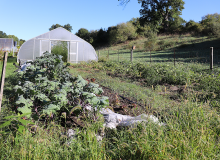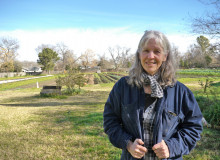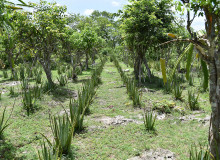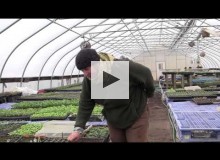local farming
University of Connecticut
The weather changes in the past few seasons have had detrimental effects on the health of Connecticut soil. Find out how these farmers are adapting.

The sign outside Spring Valley Student Farm, a collaborative project with UConn’s Residential Life, Dining Services and EcoHouse Learning Community in Mansfield, Conn., on Sept. 23, 2022. Jessica Larkin-Wells, the farm manager for Spring Valley Student Farm, said the farm focuses heavily on education, including how to build resilient soil. (Madeline Papcun/University of Connecticut)
University of Connecticut
Farmers around Mansfield, Connecticut, and around the world, have been facing intertwined production and economic challenges due to variation in precipitation levels. So how are they adapting?
Ithaca College
Local farms provide communities not only with nutritious food, but also a way towards environmental sustainability by working directly with their local community.
Planet Forward Correspondent | Dartmouth College
Two Austin, Texas, urban farms led the way for their area's locavore movement. These farmers talk about their motivation, and discuss why eating local is so important.
Planet Forward Senior Correspondent | American University
Milpa is a type of sustainable farming historically practiced by the Maya in the Yucatán and other parts of Mesoamerica. The milpas, planted with numerous crops for local consumption, are facing challenges from climate change.
SUNY ESF
Indoor mushroom farms offer a local alternative to meat and imported mushrooms with high greenhouse gas emissions.
Roger Williams University
Blue Skys Farm is a small farm located in Cranston, Rhode Island that is operated by Christina Dedora. The farm is about 2 acres of land and is currently producing lettuce, arugula, and spinach. This farm produces different fruits and vegetables... Read More





